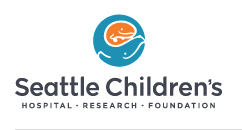Longitudinal Assessment of Transient Elastography in Cystic Fibrosis
| Status: | Enrolling by invitation |
|---|---|
| Conditions: | Gastrointestinal, Pulmonary |
| Therapuetic Areas: | Gastroenterology, Pulmonary / Respiratory Diseases |
| Healthy: | No |
| Age Range: | 6 - 26 |
| Updated: | 4/17/2018 |
| Start Date: | April 1, 2017 |
| End Date: | December 2020 |
To determine if transient elastography (TE), when combined with ultrasound (US) pattern
characterization can improve the prediction of progression to a nodular pattern on US.
To confirm the feasibility of obtaining TE measurements in children with Cystic Fibrosis (CF)
To prospectively assess whether TE data are associated with conventional laboratory markers
of hepatic fibrosis To determine the variability of TE measurements taken at different sites
in the same patient
characterization can improve the prediction of progression to a nodular pattern on US.
To confirm the feasibility of obtaining TE measurements in children with Cystic Fibrosis (CF)
To prospectively assess whether TE data are associated with conventional laboratory markers
of hepatic fibrosis To determine the variability of TE measurements taken at different sites
in the same patient
A noninvasive assessment of hepatic fibrosis is desperately needed to advance the care of
children with CF significant liver disease and to provide for measurements during clinical
trials. That global assessment might serve as both a predictor/descriptor of disease course
but also as a critical biomarker for clinical research. FibroScan® measurement of liver
stiffness has great potential to fill this void. The underlying hypothesis of this proposal
is that elastography in addition to US can improved the prediction of the development of a
nodular liver on US and development of portal hypertension over time in children and young
adults with CF.
children with CF significant liver disease and to provide for measurements during clinical
trials. That global assessment might serve as both a predictor/descriptor of disease course
but also as a critical biomarker for clinical research. FibroScan® measurement of liver
stiffness has great potential to fill this void. The underlying hypothesis of this proposal
is that elastography in addition to US can improved the prediction of the development of a
nodular liver on US and development of portal hypertension over time in children and young
adults with CF.
Inclusion Criteria:
- Participants enrolled in CFLD NET PUSH study in longitudinal follow up at centers with
Fibroscan available (currently 8/11 centers)
- Entry criteria for that study were:
- CF as determined by sweat chloride >60 meq/l
- Pancreatic insufficiency
- Age 3-12 years old at entry
- For entry into the longitudinal follow up subjects were in one of two groups
- A screening US pattern of nodular liver (CIR), heterogeneous increased
echogenicity (HTG) or homogeneous increased echogenicity (HMG)
- A screening US pattern of normal (NL) matched to a HTG subject (2 NL:1HTG) by
age, center and pseudomonas status
Exclusion Criteria:
- Exited from the PUSH Study
- Unable / unwilling to sign consent
We found this trial at
8
sites
Children's Healthcare of Atlanta Whether treating a toddler in an emergency or supporting a teen...
Click here to add this to my saved trials
Children's Hospital Colorado At Children's Hospital Colorado, we see more, treat more and heal more...
Click here to add this to my saved trials
Click here to add this to my saved trials
Click here to add this to my saved trials
Texas Children's Hospital Texas Children's Hospital, located in Houston, Texas, is a not-for-profit organization whose...
Click here to add this to my saved trials
Riley Hospital for Children Riley Hospital for Children at IU Health is a place of...
Click here to add this to my saved trials
Seattle Children's Hospital Seattle Children’s Hospital specializes in meeting the unique physical, emotional and developmental...
Click here to add this to my saved trials
Click here to add this to my saved trials




